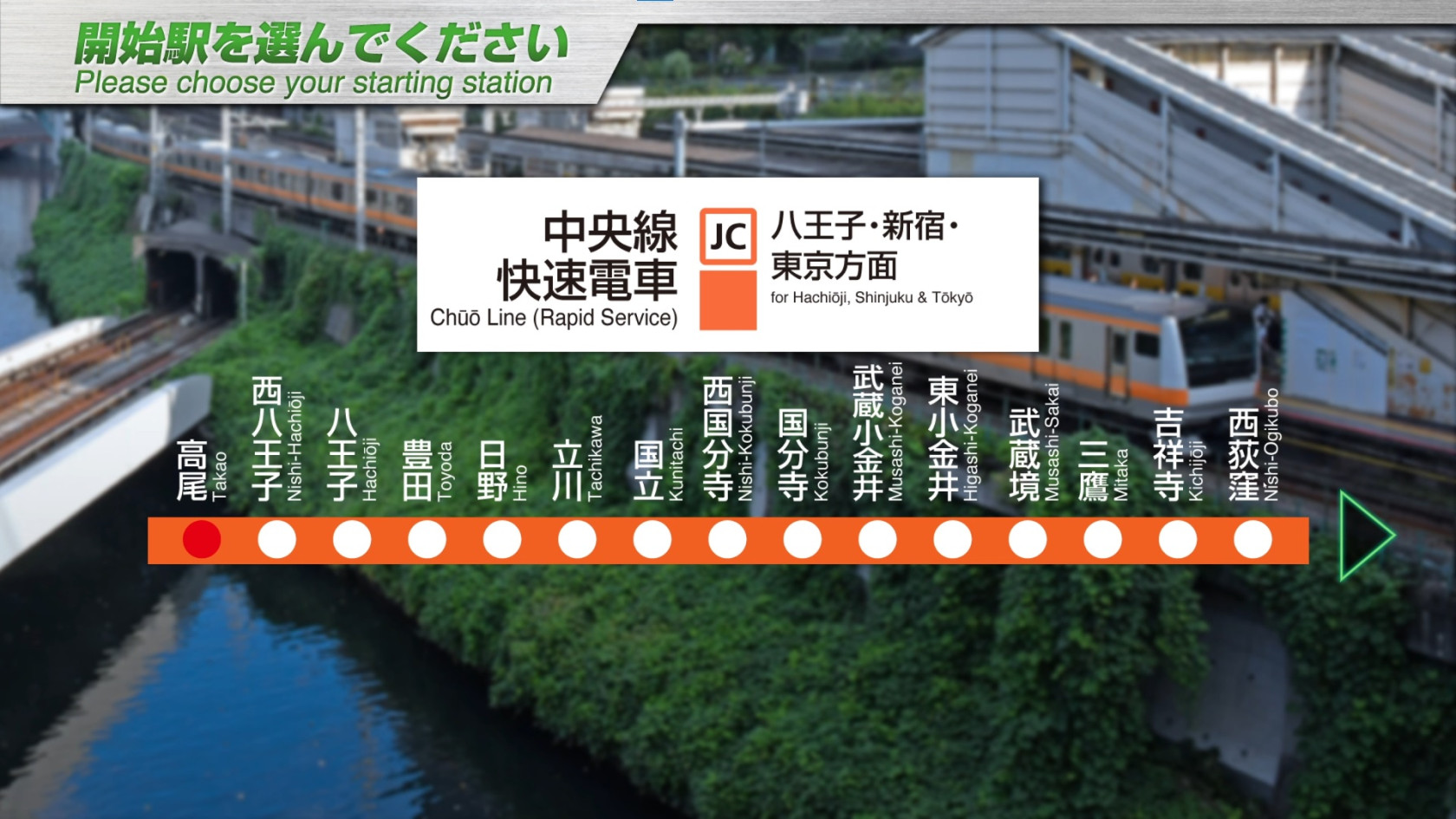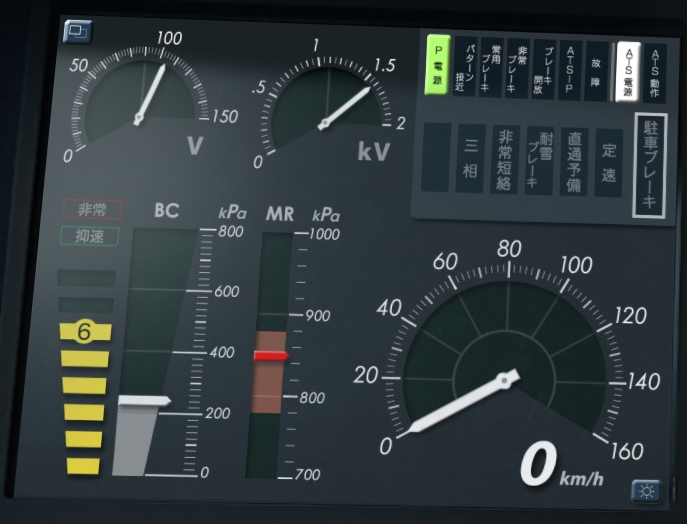Chūō Line (Rapid Service)
Introducing
The Chuo Line Rapid Service one of the major commuter lines in the Tokyo metropolitan area, connecting the Tama area, a bedroom community spreading in the western part of Tokyo, with Shinjuku, the world's largest terminal station, and the office areas of central Tokyo.
The line runs east to west in a straight line for more than 20 km through the center of Tokyo between Tachikawa Station and Nakano Station.
The line between Yotsuya and Ochanomizu Stations is characterized by the fact that the tracks are laid along the remains of the outer moat of Edo Castle, and passengers can enjoy the varied scenery of the outer moat of Edo Castle and the Kanda River.
The first half of the line is a commuter line running through a bedroom town, while the second half runs through the Akihabara Electric Town and the office district of central Tokyo.
Key data
- Line length : 53.1 km
- Number of stations : 24
- Safety system : ATS-P
- Train model : E233-0 series (10 cars)
- Max speed : 100 km/h
- Max speed after signals :
- Reduced speed (green/yellow) : 65 km/h
- Caution (yellow) : 45 km/h
- Speed restriction (yellow/yellow) : 25 km/h
- Routes :
- Tachikawa ~ Tokyo (602H) : "Commuter Special Rapid" - 7 stations - 37.5 km
- Takao ~ Tokyo (692T) : "Rapid" - 24 stations - 53.1 km
- Takao ~ Tokyo (916H) : "Chuo Special Rapid" - 14 stations - 53.1 km
- Tachikawa ~ Tokyo (1034T) : "Rapid" - 16 stations - 37.5 km
- Takao ~ Tokyo (1654T) : "Rapid" - 24 stations - 53.1 km
- In-train announcements : Yes
- Driver announcement (pointing-and-calling) : No
ConsoleStations detaillist
Apart
| Station name |
Japanese name |
Distance from (km) |
Services | JRETS |
||
|---|---|---|---|---|---|---|
| Rapid | Rapid Spécial |
Commuter |
||||
| Takao | 高尾 | 53,1 | ● | ● | ||
| Nishi-Hachiōji | 西八王子 | 49,8 | ● | ● | ||
| Hachiōji | 八王子 | 47,4 | ● | ● | ||
| Toyoda | 豊田 | 43,1 | ● | ● | ||
| Hino | 日野 | 40,8 | ● | ● | ||
| Tachikawa | 立川 | 37,5 | ● | ● | ● | JN Nambu (last stop) |
| Kunitachi | 国立 | 34,5 | ● | | | | | |
| Nishi-Kokubunji | 西国分寺 | 32,8 | ● | | | | | |
| Kokubunji | 国分寺 | 31,4 | ● | ● | ● | |
| Musashi-Koganei | 武蔵小金井 | 29,1 | ● | | | | | |
| Higashi-Koganei | 東小金井 | 27,4 | ● | | | | | |
| Musashi-Sakai | 武蔵境 | 25,7 | ● | | | | | |
| Mitaka | 三鷹 | 24,1 | ● | ● | | | |
| Kichijōji | 吉祥寺 | 22,5 | ● | | | | | |
| Nishi-Ogikubo | 西荻窪 | 20,6 | ● | | | | | |
| Ogikubo | 荻窪 | 18,7 | ● | | | | | |
| Asagaya | 阿佐ケ谷 | 17,3 | ● | | | | | |
| Kōenji | 高円寺 | 16,1 | ● | | | | | |
| Nakano | 中野 | 14,7 | ● | ● | | | |
| Shinjuku | 新宿 | 10,3 | ● | ● | ● |
|
| Yotsuya | 四ツ谷 | 6,6 | ● | ● | ● | |
| Ochanomizu | 御茶ノ水 | 2,6 | ● | ● | ● | |
| Kanda | 神田 | 1,3 | ● | ● | ● |
JY Yamanote |
| Tokyo | 東京 | 0 | ● | ● | ● |
JT Tōkaidō JU Utsunomiya ( JO JJ JE Keiyō ( JO
|
Movie
Useful links
Wikipedia : https://en.wikipedia.org/wiki/Ch%C5%AB%C5%8D_Main_Line
Driver's guide :and timetables: https://docs.google.com/spreadsheets/d/15ipf5Csaq6tgzw9Y2Atap77WVuTPDs74pZM4uwsJ3-U/edit#gid=1430578599
Timetables (in japanese):
Takao ~ Tokyo (1654T) :https://docs.google.com/spreadsheets/d/15ipf5Csaq6tgzw9Y2Atap77WVuTPDs74pZM4uwsJ3-U/edit#gid=416985281Takao ~ Tokyo (916H) :https://docs.google.com/spreadsheets/d/15ipf5Csaq6tgzw9Y2Atap77WVuTPDs74pZM4uwsJ3-U/edit#gid=1436726639Tachikawa ~ Tokyo (602H) :https://docs.google.com/spreadsheets/d/15ipf5Csaq6tgzw9Y2Atap77WVuTPDs74pZM4uwsJ3-U/edit?gid=1500119228#gid=1500119228Takao ~ Tokyo (692T) :https://docs.google.com/spreadsheets/d/15ipf5Csaq6tgzw9Y2Atap77WVuTPDs74pZM4uwsJ3-U/edit?gid=720907371#gid=720907371Tachikawa ~ Tokyo (1034T) :https://docs.google.com/spreadsheets/d/15ipf5Csaq6tgzw9Y2Atap77WVuTPDs74pZM4uwsJ3-U/edit?gid=933293906#gid=933293906


